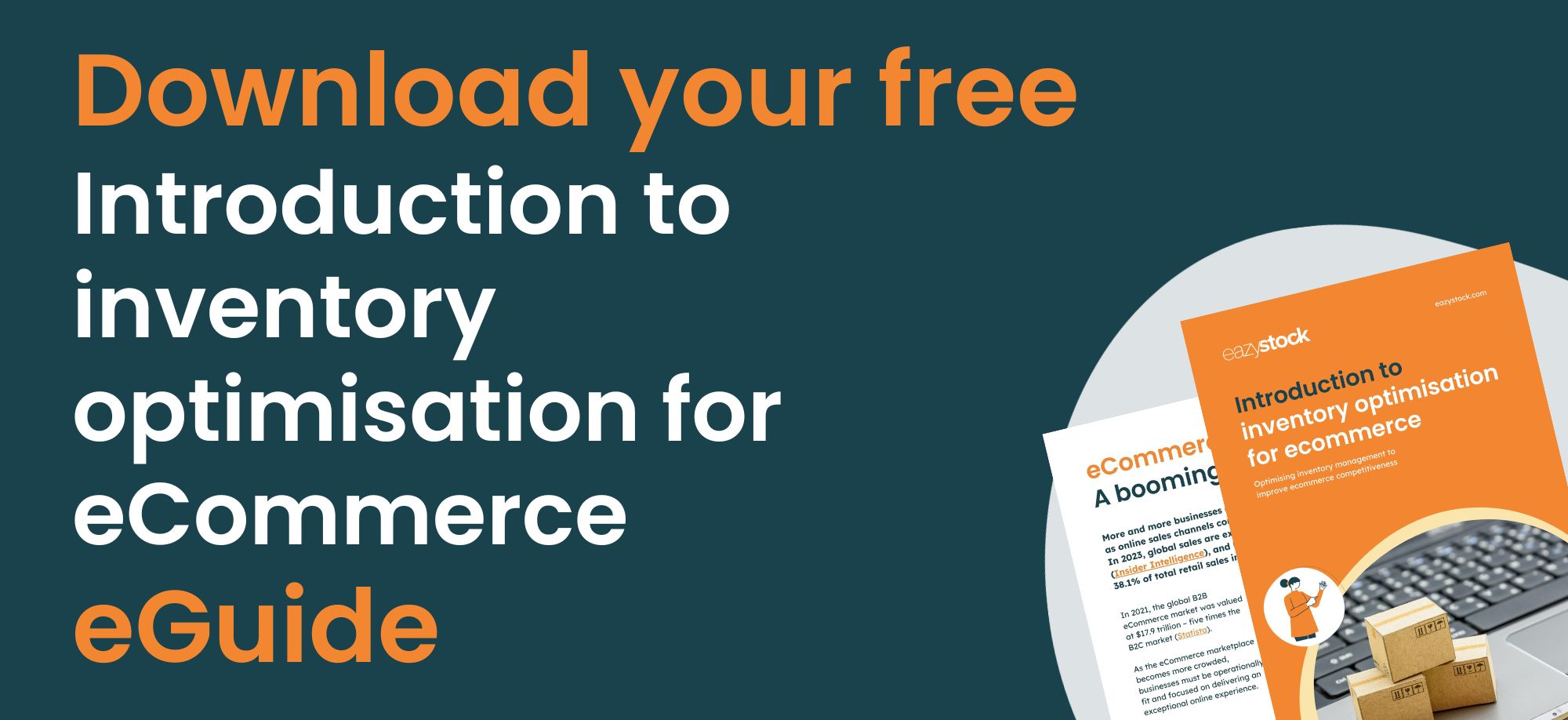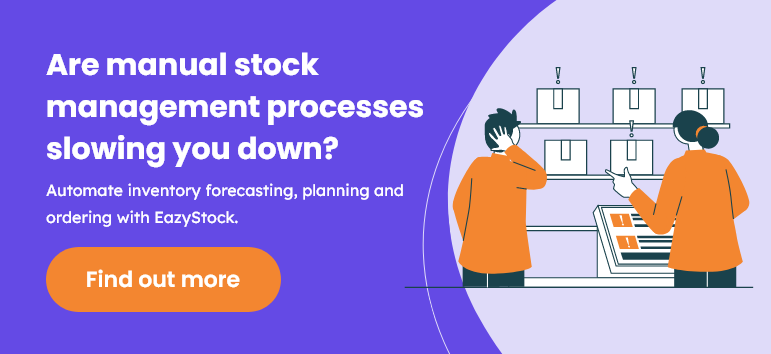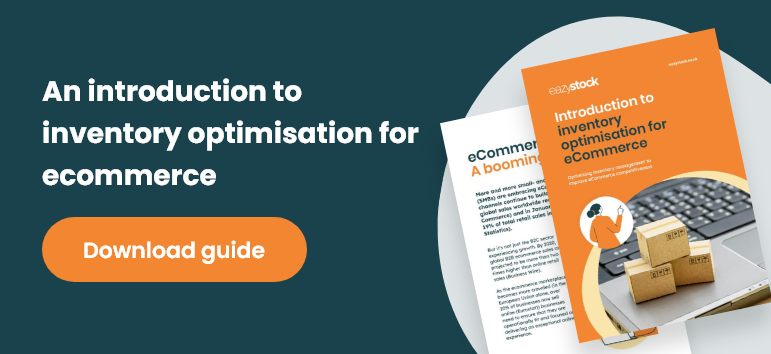A guide to supply chain management in eCommerce
Supply chain management in ecommerce
The growth of ecommerce in both the B2C and B2B sectors has bought a wealth of opportunities for businesses to expand their reach, use multi-channel sales and target new customers. But at the same time, it also brings intense competition, with new players, both large and small, continually entering the marketplace and vying for a piece of the action.
For businesses to succeed in ecommerce they must ensure that their supply chain management operations are 100% aligned. This means their supply chain must be as efficient at serving ecommerce sales channels as it is at fulfilling offline markets.
In this blog we look at:
- Why supply chain management is so important to ecommerce success
- Critical areas to focus on when looking to adapt your ecommerce supply chain management strategy
- Specific ways you can improve supply chain efficiency
Why you need an effective ecommerce supply chain strategy
There are three key reasons why you need an effective ecommerce supply chain strategy:
- To ensure stock availability (service levels) & prevent stock outs
- To deliver goods quickly and cost-efficiently
- To encourage positive customer reviews and preserve brand reputation
- To deliver cost efficiencies which support profitability
Let’s take a look at each in more detail.
1. Effective ecommerce supply chain management ensures stock availability
The ecommerce marketplace is extremely transparent, especially with the growing popularity of online marketplaces. Customers can discover with the click of a mouse whether the product they want is in stock and how long it will take to arrive. Stock availability is therefore a number one factor to growing online sales.

Ecommerce has helped spawn customers’ expectations of instant gratification. If you’re unable to fulfil orders because you’re out of stock, it’s easier than ever for them to find a competitor who will. Just one out-of-stock product can lead to abandoned baskets, lost sales of supplementary goods and once loyal customers taking their future business elsewhere.
Realistically, ecommerce supply chain teams should be aiming to achieve fulfilment rates of 99% or higher. By ensuring stock availability, most out-of-stock scenarios and consequential lost sales can be avoided.
2. Supply chains need to offer fast and free delivery
Effective supply chain management will ensure goods move from manufacturers to the end user as cost-efficiently as possible. This could involve multi-channel operations or shipping goods globally. Regardless of the challenges, order fulfilment should be a core objective at the heart of every ecommerce business.
Today’s customers are demanding fast shipping and expectations are that it will be free and returns will be easy. A recent US study found that 48% of baskets were abandoned to due extra costs, such as shipping, whilst 22% left due to slow delivery times.
3. Efficient supply chain management lays the foundations for positive customer reviews
It’s fair to say that online reviews are a key driver of ecommerce sales. For starters, 90% of shoppers say online reviews influence their buying decisions.

Increasingly your brand reputation is being measured by customer reviews that are influenced by their customer experience. Online product positioning is also affected by customer reviews, for example price comparison search engines take reviews into account when listing your goods, and marketplaces like eBay and Amazon allow shoppers to sort by recommendations.
With many online websites encouraging customer reviews, ecommerce companies are particularly vulnerable to negative feedback. It’s therefore imperative that you deliver a great shopping experience and keep customers happy. Whether you deliver-to-door or offer click and collect services, effective supply chain management is the backbone of your ecommerce strategy.
4. Economical ecommerce supply chain strategies support profitability
For many industries, the ecommerce marketplace is very competitive and shoppers are price sensitive, using comparison websites to find the best deal. With margins tight, supply chain operations need to be as lean and cost-efficient as possible. This may include having automation to speed up manual inventory management tasks, such as demand forecasting or reordering calculations
Effective ecommerce supply chain management also demands a competitive purchasing strategy. This may include weighing up the benefits of ordering in bulk for supplier discounts, versus the limitations of larger order sizes, such as increased carrying costs and lower turnover rates.
Inventory is a major area of investment for ecommerce businesses. The more capital you invest in stock sat in a warehouse, the less you have for investment in other areas of your business. Plus, if the stock doesn’t sell, you risk it becoming obsolete and having to be sold off at discounted rates. Inventory management teams therefore need to balance their goal of fulfilling orders first time, with the risk of holding excessive amounts of stock.
The critical components of supply chain management in ecommerce
Many components need to come together to form an effective ecommerce supply chain management strategy. These include:
Planning: An effective ecommerce supply chain strategy begins by having an in-depth understanding of your trading environment. There are many demand and supply variables that need to be taken into account. For example, can you accurately forecast demand, and how do you mitigate the risks of lead time delays? The list in endless.
Sourcing: Some ecommerce companies have a complex network of global manufacturers, others rely on their suppliers for drop-shipping. Whatever your business’s contractual requirements, procuring quality goods at the right price is key to ecommerce competitiveness.
Logistics: Whether it’s raw materials, parts, or finished goods, ecommerce businesses need to consider the cost, speed, reliability, security and sustainability of moving inventory along the supply chain.

Data management: Data is king and allows businesses to understand what’s happening at each stage of their ecommerce supply chain. From website analytics that provide insights into buying behaviour, to real-time stock management that gives total transparency over SKU levels – data leads to increased efficiencies at all levels.
Returns: Having an easy returns process is important to customers who want convenience and choice, but at the same time, it’s imperative to the efficient running of your internal operations. The growth in omni-channel sales and global marketplaces has made it more challenging to achieve this.
The secret to effective supply chain management in ecommerce
At the heart of each of these supply chain management components is a need to balance demand and supply e.g ensuring that the upstream supply of inventory from suppliers matches the downstream demand from customers. This involves optimising inventory levels at each stage of the supply chain. Introducing inventory optimisation techniques is one way to achieve this. Inventory optimisation is the art of balancing inventory investment with the need to hold enough stock to achieve stock availability.
Optimised ecommerce inventory management involves:
- Demand forecasting that takes into account product life cycle demand patterns, market trends, seasonality and promotions.
- Classifying inventory items and setting stocking policies so you can prioritise the items you hold in stock, based on their value, pick frequency and order lead times, to free up working capital.
- Calculating reorder points and safety stock levels so your risk of stockouts is drastically reduced.
- Reducing the impact of variable supplier lead times and ordering constraints on supply chain efficiency.
Want to know more about how to optimise your ecommerce inventory management practices? Read part two…
Or, for more information on EazyStock email us or call 0121 503 2650.
First created 26 October 2017 and re-published in August 2021.











